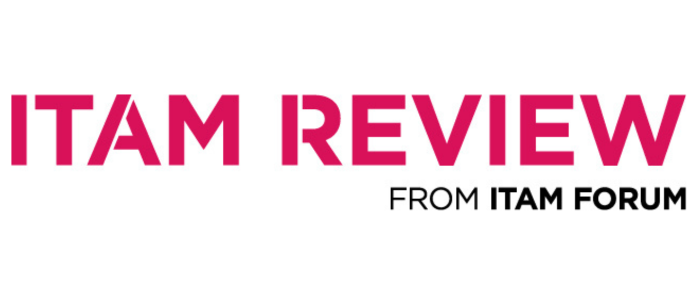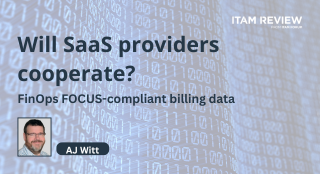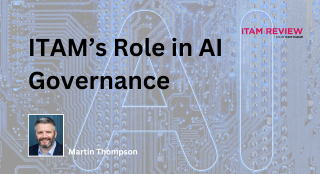The Allure of the Cloud: What are We Chasing?
When I ask ITAM professionals about their transition to the cloud, the responses are often similar: “It wasn’t my decision.” It’s striking how many people feel this way—decisions about moving from on-premises solutions to the cloud are being made at levels far removed from the people managing the technology. It’s the C-suite taking those calls in most cases without even consulting the ITAM teams.
It’s like choosing between renting a house or owning one. Renting offers flexibility and fewer upfront costs, but it comes with its own set of challenges. You’re at the mercy of your landlord’s whims—rent hikes, rules, and changes beyond your control. Similarly, cloud providers manage the infrastructure, but what happens if they decide to raise prices or change the rules? How much control are we giving away in the pursuit of convenience?
Let’s make no mistake: cloud providers are as significant as utility companies, and they are now in that “too big to fail” category—both for consumers and for stakeholders who have heavily invested in them. The tricky part? There is no regulator, only market forces. Unlike electricity, where you can switch providers if dissatisfied, you can’t easily switch cloud providers. Every “lift and shift” comes with steep costs due to embedded technology. The deeper your organisation is embedded in a cloud offering, the harder—and costlier—it becomes to get out.
Electricity Utilities: A Tale of Two Countries
Let me take a detour into the world of electricity, where some parallels to the cloud become clear.
- India: Here, the electricity sector operates under a complex system of cross-subsidies. Industries pay higher rates to subsidise residential and agricultural consumers—a seemingly equitable approach that hurts business competitiveness. Some companies, especially in the manufacturing industry, unable to cope, have built their own captive power plants to reduce costs. While this is a workaround, it’s far from perfect. For a country like India, which aims to compete with China in manufacturing to provide millions with jobs, absorbing these additional costs is unsustainable for businesses striving to remain profitable for shareholders. It is like moving from the cloud to building your own on-premise data centre. This is feasible for a company of a reasonable size, but not every manufacturing company will be able to do it.
- UK: When I arrived in the UK, I chose an energy provider claiming 100% renewable energy. It sounded like a solid choice. However, during the energy crisis, my bills skyrocketed. Shouldn’t renewable energy costs remain relatively stable? With existing PPAs (Power Purchase Agreements) in place, only gas prices should have surged, impacting other providers. So why did my energy price increase? Could I raise this issue with a regulator? Was the claim of 100% renewable energy misleading? I understand the need for procurement for new customers, but how can an existing customer’s rates rise without proper forecasting or accountability? Do regulators even care?
If regulated electricity utilities can be so volatile, what does this mean for the cloud, where there’s far less oversight?
Cost Savings or Cost Traps?
One of the loudest arguments for cloud adoption is cost savings. But is it really cheaper? I can’t help but question this narrative:
- Electricity Costs: Cloud providers rely on external power suppliers, many of which face fluctuating energy markets. How sustainable are these cost savings in the long run?
- Operational Expenses: While the cloud reduces the need for in-house IT maintenance teams, it demands upskilling existing teams or hiring new resources—often at significantly higher costs. What’s the real price of these changes?
- Asset Ownership: On-premises infrastructure builds equity over time. Cloud adoption shifts everything to operational expenses, leaving organisations without ownership or equity.
Organisations often find themselves trapped in cycles of dependency, paying more as cloud providers adjust pricing. Once deeply integrated into a cloud provider’s ecosystem, migration costs become astronomical, unlike electricity.
The Hybrid Cloud Approach: A Middle Ground?
I’ve been mulling over hybrid cloud strategies as a potential compromise—keeping sensitive data on-premises while moving workloads that need scaling to peak demands to the cloud. It seems logical, but it requires a level of planning and foresight that many organisations lack.
The Bigger Picture: Sustainability and Control
Another layer to this discussion is sustainability. What’s the carbon footprint of hosting data in the cloud? And as we chase faster, newer technology (on-prem to the cloud), how much electronic waste are we generating?
I sometimes wonder if we’ve crossed the point of diminishing returns with computing power. Do all industries need this constant cycle of upgrades? While AI and machine learning demand cutting-edge technology and the cloud is probably required without a choice, many businesses can operate efficiently with basic tools for years and do not need the cloud for all their requirements.
Drawing Parallels: Lessons from Public Utilities
The parallels between cloud computing and utilities like electricity are hard to ignore. Both involve large, centralised providers offering essential services. Both promise stability but often operate in ways that feel opaque to the end user once they control all of the market.
My Worrying Mind: Questions Without Easy Answers
Perhaps I’m overthinking it. Maybe the cloud is just another step in our technological evolution. But as someone who sees the practical challenges firsthand, I can’t help but worry about the future implications:
- Control: Are we giving away too much of it to providers?
- Transparency: Do we fully understand the costs we’re incurring?
- Sustainability: Are we unnecessarily getting rid of hardware that can serve us for another 5-to-10 years?
These questions keep swirling in my mind.
A Call for Conversation
I don’t have all the answers, but maybe that’s the point. This isn’t about prescriptive solutions—it’s about starting a conversation. It’s about asking uncomfortable questions and challenging the status quo.
So here’s to exploring the unknown, worrying about the future, and, hopefully, finding better ways to navigate this complex, cloudy world.
This blog is by Guest Writer Chris Augustin. Chris is a Senior Customer Success Manager with extensive experience within the IT Asset Management (ITAM) industry. In his current role, he engages with hundreds of ITAM professionals monthly, helping them utilise LISA training designed to enhance their skills and knowledge.
Can’t find what you’re looking for?
More from ITAM News & Analysis
-
Addressing the SaaS Data Gap in FinOps FOCUS 2.1
I recently reported on the FinOps Foundation’s inclusion of SaaS and Datacenter in its expanded Cloud+ scope. At that time, I highlighted concerns about getting the myriad SaaS companies to supply FOCUS-compliant billing data. A couple ... -
The Future of ITAM
As an ITAM Industry Analyst, I’m often asked what ITAM’s future looks like. This can be a tough question to answer because when it comes to the future, there are endless possibilities. Often, it seems, some ... -
The Allure of the Cloud: What are We Chasing?
When I ask ITAM professionals about their transition to the cloud, the responses are often similar. “It wasn’t my decision.” It’s striking how many people feel this way—decisions about moving from on-premises solutions to the cloud ...
Podcast
ITAM training
Similar Posts
-
Addressing the SaaS Data Gap in FinOps FOCUS 2.1
I recently reported on the FinOps Foundation’s inclusion of SaaS and Datacenter in its expanded Cloud+ scope. At that time, I highlighted concerns about getting the myriad SaaS companies to supply FOCUS-compliant billing data. A couple ... -
The Future of ITAM
As an ITAM Industry Analyst, I’m often asked what ITAM’s future looks like. This can be a tough question to answer because when it comes to the future, there are endless possibilities. Often, it seems, some ... -
The M&S Cyberattack: How IT Asset Management Can Make or Break Your Recovery
Marks & Spencer (M&S), the iconic UK retailer, recently became the latest high-profile victim of a devastating cyberattack. Fellow retailers The Co-Op and Harrods were also attacked. Recent reports suggest the rapid action at the Co-Op ... -
AI in ITAM: Insightful Signals from the Front Line
During our Wisdom Unplugged USA event in New York in March 2025, we engaged ITAM professionals with three targeted polling questions to uncover their current thinking on Artificial Intelligence—what concerns them, where they see opportunity, and ...




